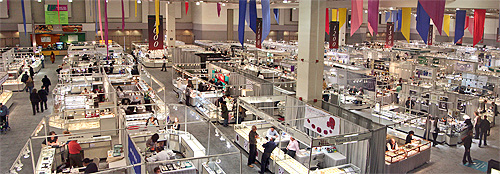I am slowly learning how to add little video clips to my
blog so here is my first one. It was my
practice piece but then I thought it came out nice enough to share. In this video, Pierre explains how he is
prong setting 3mm diamonds into a diamond eternity band. First he opens the ring up underneath, then
he drills the seat, pops in the diamond and gently pushes the prongs over the
stone. They pop into place perfectly. And the end, Pierre shapes the prongs into
perfectly round little “balls” for an even appearance.
As most of you already know, there are many different kinds
of setting techniques, and each takes a separate set of tools and a separate
skill set. Simple prong setting is the
easiest, and it is least harmful to the stone.
In his office, Pierre is equipped with a huge microscope, flex shafts,
beading and millgrain tools, clamps of all types, ultrasonic, and who knows
what else. To be fully equipped,
especially for setting micro pave under a scope, you need to invest several
thousand dollars.
Pierre has been in the jewelry trade since he was 14, and
has decades of experience just setting stones.
Still, some of my gems present unique challenges to him. Most setters set diamonds, or rather, most of
what is set in industry are diamonds, and those are hard to break. Many colored gems can get scratched or
chipped by the tools that are needed to push the metal over the gem and file
down the prongs, so a very steady hand is needed, and gems do break on
occasion. That’s why setters do not
guarantee the stones they set. Too much
risk is involved and insurance is crappy and expensive. It is therefore best to go over your project
with the setter carefully, making sure the gem can withstand the tools that are
needed for the particular setting job.
Gems are inspected for inclusions or cracks which can present additional
risks.
Another challenge is getting a tiny piece of jewelry to stay
in place and not bend or move while the setter works on it. Rings are the easiest because you can put
them into the clamp, but pendants sometimes have to be set in shellac, or
setting cement, a wax like substance that melts when warmed up. To remove the shellac, the jewelry piece has
to be warmed up in water and then cleaned in the ultrasonic. Sometimes stones break during that process –
I once had an aqua pendant that cracked because it got overheated while the
shellac was being removed.
Customers often wonder why setting costs so much. One reason is the equipment, plus there is
the rent on 47th street that has to be paid (figure on maybe $2000 a
month for a small office). And then it
takes time. Setting a pair of earrings
may take only 10 minutes, but pave setting an entire ring can take an
afternoon. So if a setter charges $300
for that job he is within his rights. I
generally pay gladly for good work, but for my markup it presents a problem of
course. Technically, the setters I use
make jewelry that goes for thousands of dollars, not hundreds, and so the
setting cost can be more easily absorbed.
On the other hand, I find nice setting work addictive, and I like my
gems to be hugged by prongs that got filed down into tiny claws, or perfectly
rounded so they look like beads (you can see how that works in the video).


